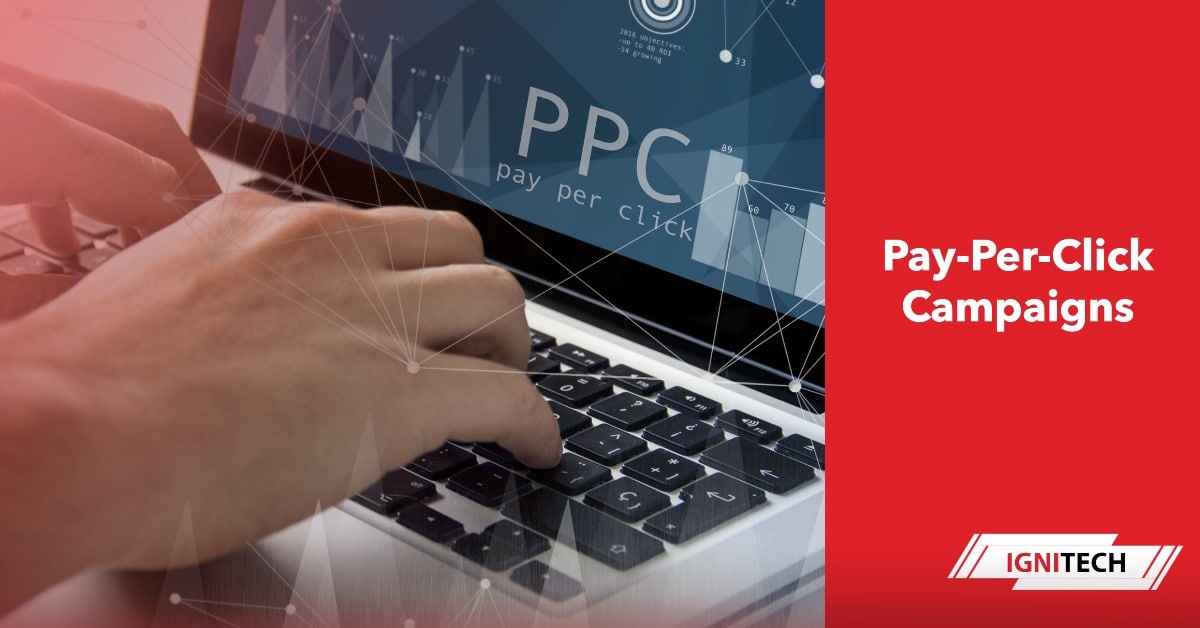Standing out in a crowded online marketplace can feel impossible. But what if you could reach your ideal customers the very moment they’re searching for what you offer?
Pay-Per-Click Campaigns put you at the front of the line, with targeted ads that turn clicks into conversions. PPC isn’t a magic bullet, but it is a powerful tool to dominate the digital game and outshine your competition. Let’s dive into how PPC can transform your marketing strategy.
What are Pay-Per-Click Campaigns?

Pay-per-click campaigns are a form of online advertising where advertisers pay a fee each time their ad is clicked. These ads are typically displayed on search engines like Google or social media platforms like Facebook, and they are triggered by specific keywords or user behaviors. The beauty of pay-per-click advertising lies in its ability to target highly relevant audiences, ensuring that your message reaches the right people at the right time.
Benefits of Pay-Per-Click Campaigns
Targeted Reach: With pay-per-click advertising, you can target specific demographics, locations, interests, and even user behavior, ensuring that your ads are shown to the most relevant audience.
Measurable Results: PPC campaigns provide detailed analytics and reporting, allowing you to track your return on investment (ROI), click-through rates (CTR), and conversion rates with precision.
Flexibility: Pay-per-click campaigns can be easily adjusted and optimized based on real-time data, enabling you to make informed decisions and maximize your advertising budget.
Instant Traffic: Unlike organic search engine optimization (SEO), which can take time to yield results, pay-per-click advertising can drive targeted traffic to your website or landing pages immediately.
5 Effective Strategies for Successful Pay-Per-Click Campaigns
Keyword Research and Optimization: Identifying the right keywords is crucial for the success of your pay-per-click campaigns. Conduct thorough keyword research to understand your target audience’s search behavior and optimize your campaigns accordingly.
Ad Copy Optimization: Crafting compelling and relevant ad copy is essential for capturing the attention of your target audience and increasing click-through rates. Test different variations of your ad copy to find the most effective messaging.
Landing Page Optimization: Your landing pages play a critical role in converting visitors into customers. Ensure that your landing pages are well-designed, user-friendly, and aligned with the messaging of your pay-per-click advertising campaigns.
Remarketing in your PPC: Remarketing in your PPC campaigns allows you to target users who have previously interacted with your brand or visited your website. This strategy can be highly effective in nurturing leads and increasing conversions.
Continuous Optimization: Pay-per-click campaigns require ongoing monitoring and optimization to ensure maximum efficiency and performance. Regularly analyze your campaign data, test new strategies, and make adjustments based on your findings.
Understanding Pay-per-click Cost

The pay-per-click cost refers to the amount you pay each time someone clicks on your ad. This cost is determined through an auction process, where advertisers bid on keywords and ad placements. Factors such as keyword competitiveness, ad relevance, and quality score influence the pay-per-click cost.
Effective pay-per-click advertising requires a delicate balance between maximizing your reach and managing your advertising budget. By carefully monitoring and optimizing your campaigns, you can achieve a favorable cost-per-acquisition (CPA) and maximize your return on investment (ROI).
Pay-Per-Click Campaigns offer a powerful and highly targeted approach to digital marketing. By implementing effective strategies, such as keyword research, ad copy optimization, landing page optimization, remarketing, and continuous optimization, businesses can unlock the full potential of pay-per-click advertising. With the ability to measure and adjust campaigns in real-time, PPC campaigns provide a level of control and flexibility that can drive significant growth and success for your business.
FAQs
A common example of a pay-per-click campaign is when a business creates ads on Google Search for specific keywords related to their products or services. When a user searches for those keywords and clicks on the business’s ad, the business is charged a fee (the pay-per-click cost).
Pay-per-click campaigns work by allowing businesses to create ads that are displayed to users based on specific keywords or targeting criteria. Businesses bid on these keywords or targeting options, and when a user clicks on their ad, the business pays the agreed-upon fee (the pay-per-click cost). The ads are typically displayed on search engines like Google or social media platforms like Facebook.
PPC and SEO serve different purposes. While PPC offers immediate visibility, SEO focuses on long-term organic growth. Both are valuable and integrating them can enhance your overall online presence.
A cost-per-click (CPC) campaign is a type of pay-per-click advertising where businesses pay a fee each time their ad is clicked. The cost-per-click is determined through an auction process where advertisers bid on keywords or ad placements.
The cost of a pay-per-click campaign can vary significantly depending on various factors, such as the industry, competition for keywords, and targeting options. The pay-per-click cost is determined through an auction process and can range from a few cents to several dollars per click. Businesses typically set a daily or monthly budget for their PPC campaigns to control their advertising costs.
Pay-per-click advertising can be highly profitable if executed correctly. By targeting the right audience, optimizing ad copy and landing pages, and continuously monitoring and adjusting campaigns, businesses can generate a positive return on investment (ROI) from their pay-per-click campaigns. However, it’s essential to carefully manage the pay-per-click cost and conversion rates to ensure profitability.
Using pay per click advertising offers several benefits, including targeted reach, measurable results, flexibility, and the ability to drive instant traffic to your website or landing pages. It allows businesses to precisely target their desired audience based on various criteria, such as demographics, interests, and behaviors. Additionally, pay per click advertising provides detailed analytics and reporting, enabling businesses to track their campaigns’ performance and make data-driven decisions for optimization.
 Khadija is driven by her passion for social media marketing and influencer collaborations. She loves connecting brands with their audiences through authentic and engaging content. Khadija is always on the lookout for the latest trends and enjoys brainstorming new ideas to keep our campaigns fresh and exciting.
Khadija is driven by her passion for social media marketing and influencer collaborations. She loves connecting brands with their audiences through authentic and engaging content. Khadija is always on the lookout for the latest trends and enjoys brainstorming new ideas to keep our campaigns fresh and exciting.












